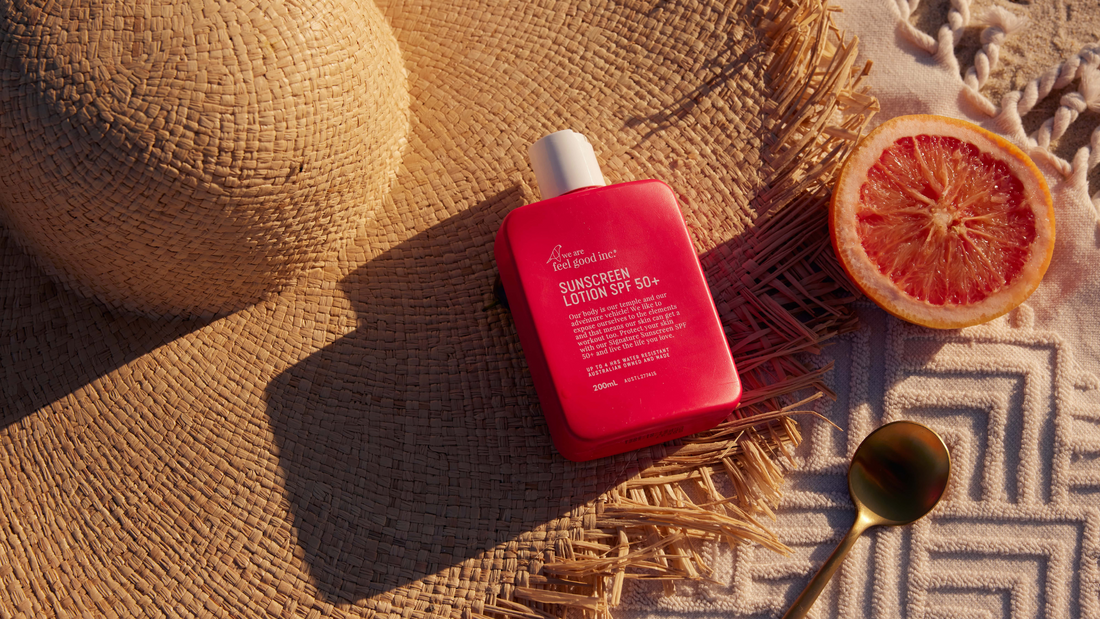When it comes to sunscreen, terms like “organic” and “natural” are often misinterpreted. You might assume they mean the same thing, but they are in fact very different.
Let’s start with where the term “organic” actually comes from:
If something is “organic” it generally means it pertains to, or is derived from living organisms. In science, it refers to molecules that contain carbon. Now stay with us...
We often hear “organic” and think of healthy, “better for us” foods. Initially the term referred to crops that are grown using fertilisers that contain carbon, aka organic-based fertilisers. It then evolved towards describing crops that were simply grown without using pesticides or other chemical fertilisers seen as “harmful”. Because of this, an organically farmed crop is considered “organic” not just because it contains carbon, but because it was grown without pesticides (i.e. harmful chemicals) which leads to confusion in what “organic” actually means. This is most likely the reason so many of us are confused when using this term to refer to sunscreen.

The Breakdown:
Sunscreen can be categorised into two types; organic and inorganic.
Organic sunscreen (aka, “chemical”):
- Carbon-based
- Use “organic” chemicals as their active ingredients, aka carbon-containing compounds
Inorganic sunscreen (aka, “physical” or “mineral”):
- Not carbon-based
- Use “inorganic” metal oxides (i.e. Zinc Oxide or Titanium Oxide) as their active ingredients, aka elements from the periodic table
- Are not “natural” - these elements may occur naturally on earth, but they need to be processed in a lab to assume their role in sunscreens
They both work in the same way, by absorbing UV rays from the sun and converting them to heat, but vary by how well they do this. Different chemical structures (i.e. different UV filters) will absorb different wavelengths of light, hence the need for multiple filters. Some filters are better at absorbing UVA rays, whereas others are better at absorbing UVB rays. By using a combination of UV filters, sunscreen formulations are able to achieve better protection, aka Broad Spectrum (UVA + UVB) coverage.
The science of sunscreen formulation is a complicated art. The best sunscreens use a combination of multiple UV filters that work in unison together to block the broad spectrum of UV light. These UV filters are then combined with other ingredients such as emollients, preservatives, and antioxidants to ensure the product is stable, is pleasant to wear and will last for a period of time. Most importantly the end product needs to be tested for safety, stability and efficacy. A good new sunscreen will take about 2 years to develop.
The Myth:
It’s a common myth that mineral, aka physical, inorganic sunscreens work entirely by reflecting UV light. Zinc Oxide and Titanium Oxide, when used in sunscreen, reflect anywhere from 4-5% of UV rays (at most) and absorb the rest. For a mineral sunscreen to reflect higher amounts of UV light, the formulation may have to compromise with more “white cast” residue. Basically, if something is clear in colour, it’s reflecting less light because there’s nothing to block it / you’re not seeing it (yep, its that basic!). So if your mineral sunscreen rubs in clear, it’s reflecting a lower percentage of UV light and therefore working in the same way as “organic”, chemical sunscreens by absorbing the light and turning it into heat.
